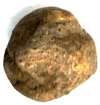Unconventional Therapies in Periprosthetic Joint Infections: Prevention and Treatment: A Narrative Review
- PMID: 40283439
- PMCID: PMC12027822
- DOI: 10.3390/jcm14082610
Unconventional Therapies in Periprosthetic Joint Infections: Prevention and Treatment: A Narrative Review
Abstract
Background: as the demand for total joint arthroplasty continues to grow each year, the healthcare burden is expected to increase due to periprosthetic joint infection (PJI). This review article aims to highlight the significance of biofilms in the pathogenesis of PJI and introduce alternative therapies that prevent bacterial adhesion to implants or enhance their eradication when infection occurs.
Search strategy: we conducted a bibliographic search in PubMed using the following MeSH terms as follows: "no antibiotic treatment of PJI", "bacterial biofilm eradication agents", and "unconventional prevention of PJI", among others. Most important results: after an initial analysis of the literature, we selected the most significant topics on novel PJI treatment methods and prevention strategies. A second PubMed search highlighted the following therapeutic modalities: the application of hydrogels on implant surfaces, the use of phage therapy, lysostaphin and antimicrobial peptides, the implementation of two-stage debridement, irrigation, implant retention and antibiotic therapy (DAIR), the intra-articular antibiotic infusion, and the use of methylene blue for biofilm eradication.
Conclusions: the use of new cement spacers with xylitol, ammonium compounds, or silver nanoparticles is another promising technique to increase the eradication rate in two-stage revision. It is important for professionals to deeply understand the pathogenesis of PJI and the role of biofilms in its development in order to become familiar with these novel techniques that could reduce the burdens on healthcare systems.
Keywords: biofilm; infection prevention; new strategies; periprosthetic joint infection; unconventional treatment.
Conflict of interest statement
The authors declare no conflicts of interes.
Figures






References
-
- Slullitel P.A., Oñativia J.I., Buttaro M.A., Sánchez M.L., Comba F., Zanotti G., Piccaluga F. State-of-the-Art Diagnosis and Surgical Treatment of Acute Peri-Prosthetic Joint Infection Following Primary Total Hip Arthroplasty. EFORT Open Rev. 2018;3:434–441. doi: 10.1302/2058-5241.3.170032. - DOI - PMC - PubMed
-
- Schwarz E.M., Parvizi J., Gehrke T., Aiyer A., Battenberg A., Brown S.A., Callaghan J.J., Citak M., Egol K., Garrigues G.E., et al. 2018 International Consensus Meeting on Musculoskeletal Infection: Research Priorities from the General Assembly Questions. J. Orthop. Res. 2019;37:997–1006. doi: 10.1002/jor.24293. - DOI - PubMed
-
- Zimmerli W. Bone and Joint Infections: From Microbiology to Diagnostics and Treatment. John Wiley & Sons; Hoboken, NJ, USA: 2014.
Publication types
LinkOut - more resources
Full Text Sources

